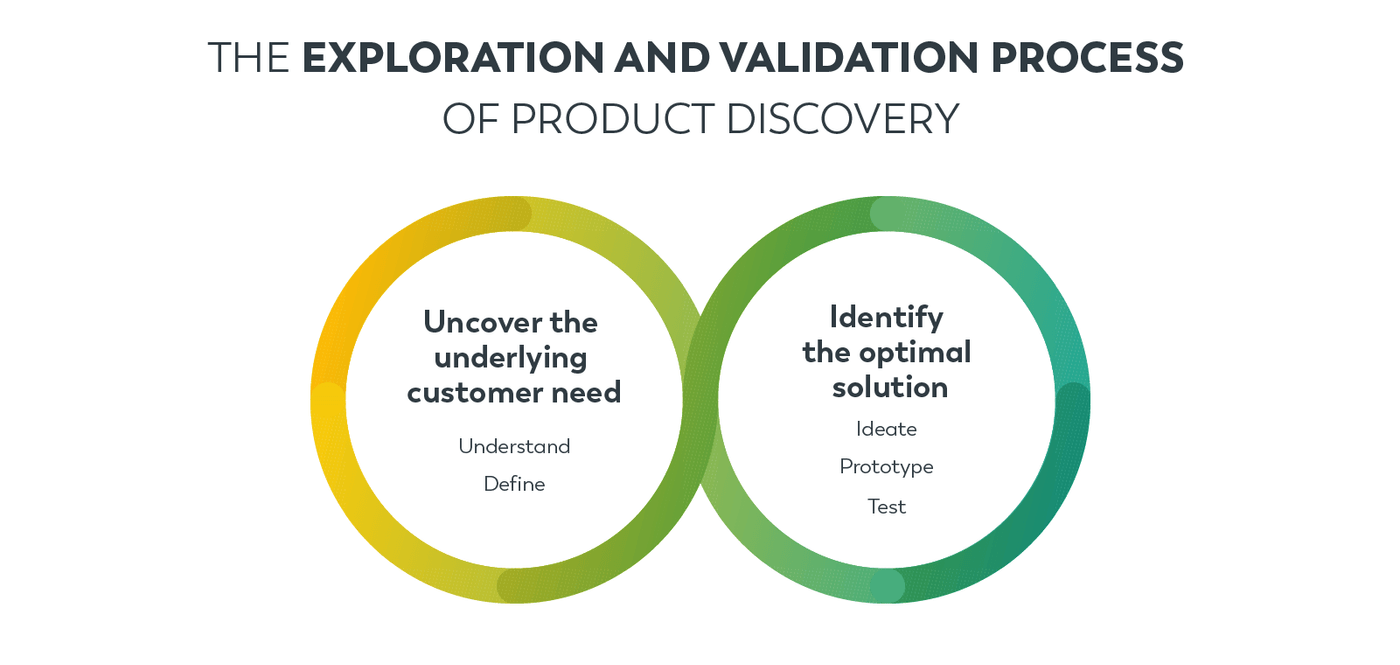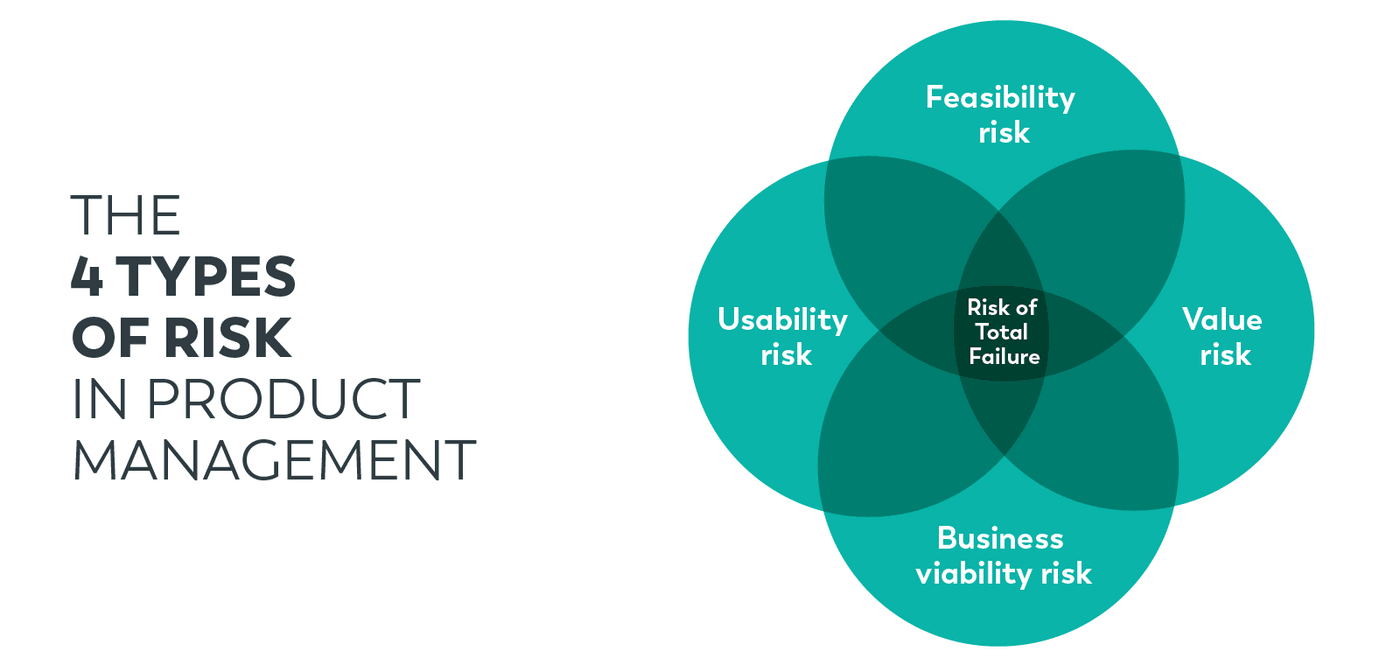Building a new product is a massive undertaking for any business. The last thing you want is to invest all your time and money into creating something and then discovering the product you put your blood, sweat, and tears into is not the product the market needed.
Too many businesses set off on this journey under the assumption that they know the needs of their customers, how to build a solution, and that everything will stay the same during the development process.
However, this thinking is a recipe for failure. Businesses operating in this way typically don’t see results justifying the time, effort, and resources they invested into development.
There’s a better way to tackle product development: the process of product discovery.
What is product discovery?
Product discovery is an iterative and incremental process of defining and understanding your customers and their needs in order to develop product or service solutions that perfectly suit their needs. It’s an increasingly critical part of the product design process in order to avoid the costly investment into building a product that customers don’t need.
The product discovery process consists of two interconnecting loops of exploration and validation where your team explores assumptions about your customers and then validates those assumptions.
This process is a shift away from the traditional upfront product design process fueled by unverified assumptions about customer needs and wishful thinking, which often results in products that don’t solve anyone’s needs.
The exploration and validation process of product discovery is rather simple and can be broken down into the following two-step structure.

1. Uncover the underlying customer need
- Understand: Here, teams rely on quantitative and qualitative research to understand the needs you are aiming to solve with your product.
- Define: Here, you’ll clearly define the problem or need you’re trying to solve, validate that it’s a problem that needs to be solved, and prioritize which problems should be solved first.
2. Identify the optimal solution
-
Ideate: You need to brainstorm ideas on how to solve your customers’ problems. After you’ve come up with ideas, your team is able to gauge potential impact and feasibility and decide on which prototypes to build and test.
-
Prototype: Building a prototype enables your team to bring their ideas to life and demonstrate their impact.
Prototypes include sketches, mockups, interactive prototypes, and MVPs (minimum viable products) among others. The type of prototype that gets built is decided by what the team is aiming to learn and test and which questions they need answered.
- Test: This is where you’ll see whether or not your team’s proposed solutions are actually capable of solving the problem it set out to solve.
During the product discovery process, your team will be constantly moving between steps 1 and 2 until the optimal solution is found.
Why product discovery is important
The product discovery process can make the difference between an irrelevant product, a nice-to-have product, and an indispensable product. Product discovery is crucial because it guides your business to build a product that is so good at solving your users’ problems that it becomes a product they can’t live without.
Without testing your assumptions about your customers, your business risks investing significant amounts of time and money into creating products that consumers can do without.
A well-implemented product discovery process can add value in three ways:
- It adds value to your customers by solving their needs.
- It adds value to your product team, ensuring they’re prioritizing the right features and building a successful product.
- It adds value to your business, ensuring your resources are not wasted on ideas and solutions that no one wants.
There is always risk involved in any product management process. In the second edition of his book Inspired, Silicon Valley-based product executive Marty Cagan identifies four types of risk in product management:
- Value risk: Whether customers buy your product or choose to use it.
- Usability risk: Whether customers can figure out how to use your product.
- Feasibility risk: Whether your team can build what you need with the time, skills, and technology available.
- Business viability risk: Whether your product solution also works within the framework of your business.

Essentially, conducting product discovery can help your business mitigate these risks and ensure your teams focus on delivering solutions to your users’ problems.
What product discovery is not
First and foremost, product discovery is not a linear, structured or predictable process. You never know when or what you might learn along the way.
As such, it’s difficult to predict or know how long it will take to validate your assumptions. For example, you might find that it takes a couple of days to develop and validate certain assumptions, while others may take weeks or more.
Furthermore, product discovery is nothing like the traditional waterfall approach to product development. In this approach, a long list of ideas and projects are typically trickled down from the executive level, leaving product managers and engineering teams to figure out how to deliver.
Product discovery is also not an implementation of lean inception, design sprints, or design thinking. While these are progressive iterations of the traditional waterfall methodology, they are still a long way from a product discovery approach.
For the proper product discovery approach, your product teams need to be reorganized to ensure they’re responsible for the process from ideation to delivery.
Get your product discovery right with VeryCreatives
Product discovery is a continuous process, and getting the cycle right can be crucial to delivering products that customers want and need.
At VeryCreatives, we partner with businesses to help them ideate, design, and develop creative digital solutions to their business problems. Reach out today if you’re ready to take your product development process to the next level.